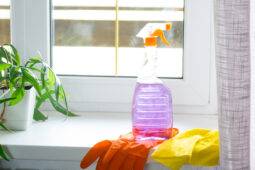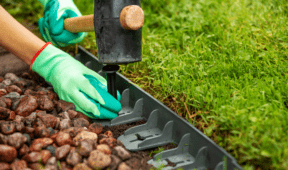How To Know If It’s Safe To Turn On Your Fireplace (And Signs It Might Be Dangerous)
When the weather cools down, there’s nothing cozier than sitting by a warm, crackling fire. But before you light that first log or flip the switch on your gas fireplace, it’s worth taking a minute to make sure your fireplace is ready and actually safe. Fireplaces, especially older ones, can hide small issues that turn into big problems fast. Here’s how to tell if your fireplace is ready to use, and how to spot the warning signs that say it’s not.
Check For Obvious Buildup

Before doing anything else, take a peek inside your fireplace. Look for soot, creosote buildup, or any shiny black residue coating the walls or flue. That stuff is flammable and one of the most common causes of chimney fires. If it looks thick or crusty, it’s time for a professional cleaning before you turn on your fireplace. Even a light coating can be a sign that it’s been a while since your last inspection.
Make Sure Your Chimney Can Breathe

Your fireplace needs a clear path for smoke to escape. Birds, leaves, or debris often end up clogging chimneys during warmer months when you aren’t using your fireplace. Stand outside your house and look up to see if the cap is clear. Inside, open the damper fully and check that it moves smoothly. If smoke has nowhere to go, it’ll fill your living room instead, and no one wants that unfortunate surprise.
Listen To Your Instincts And Your Nose

If you notice a strong smoky smell, musty odor, or the faint scent of gas before you even light the fire, stop right there. These smells often hint at trapped residue, a leak, or airflow problems. Trust your nose. A fireplace should never make your house smell “off.” Fresh air and gentle warmth are good; burning smells when nothing’s burning are not. Call in an expert to take a look before you light it.
Inspect The Structure, Not Just The Surface

Cracks in the firebox or missing mortar between bricks might not look like much, but they can let heat escape into areas it shouldn’t. That’s how hidden fires start inside walls or chimneys. If you see crumbling brick or loose pieces, don’t use the fireplace until it’s checked out. A quick repair now can save you from a much bigger issue later.
For Gas Fireplaces, Look At The Details

Gas fireplaces seem simpler, but they need to be checked too. Make sure that the glass doors are clean and sealed tight, and that the pilot light ignites cleanly without sputtering. If you smell gas or hear hissing, turn the fireplace off immediately and ventilate the room. Even a tiny leak is a major hazard. A yearly service call from a technician before you light it for the first time is worth every penny.
Don’t Forget The Carbon Monoxide Detector

This one’s easy to overlook but might be the most important. Every home with a fireplace, gas or wood, needs a working carbon monoxide detector nearby. And, it’s a good idea to change the batteries before the season starts. Carbon monoxide is invisible and odorless, which makes it especially dangerous. It’s a small device that quietly keeps your family safe so that you can enjoy that warm fire glow without worry.
Watch The Color Of Your Flames

When you finally light your fireplace, pay attention to the color of the flame. In a gas fireplace, a steady blue flame means it’s burning cleanly. Yellow or flickering flames can mean poor ventilation or dirty burners. In a wood-burning one, too much smoke or slow-burning logs can point to wet wood or airflow issues. Flames give hints too, and if they don’t look right, something’s off.
Keep Up With Regular Maintenance

Even if everything looks fine, fireplaces still need yearly inspections. A professional chimney sweep or technician can spot things you might miss, like hairline cracks, gas line wear, or vent blockages. Think of it as part of an annual checkup for your home’s health. A clean, inspected fireplace burns better, smells better, and gives you peace of mind all winter long.
Related Articles
-Why New Homes Don't Have Fireplaces Anymore
-Clever Ways To Reuse Fireplace Ashes
-How to Light Your Gas Fireplace Safely and Correctly
A fireplace should bring comfort, not worry. Taking a few minutes, or scheduling that annual inspection, can make all the difference. If anything looks or smells off, don’t take chances. Fires are meant to be enjoyed, not feared. So once you know everything’s safe and sound, you can sit back, relax, and enjoy that familiar warmth that makes a house feel like home.









